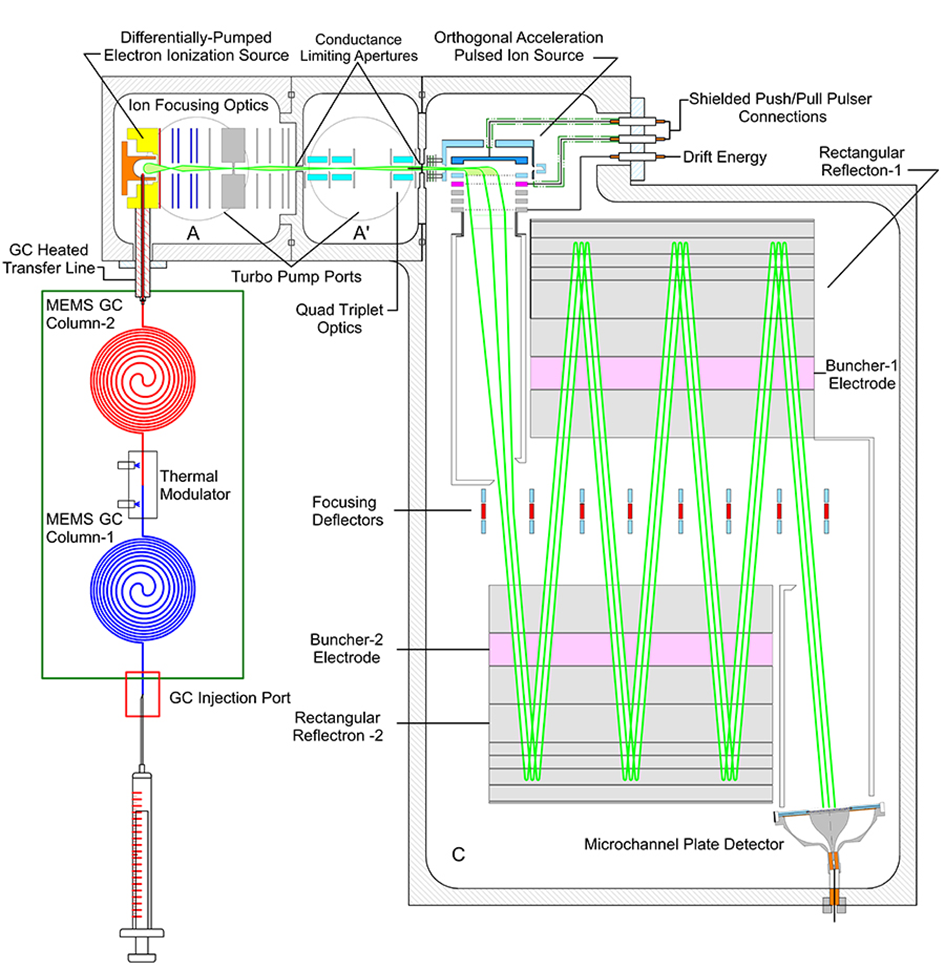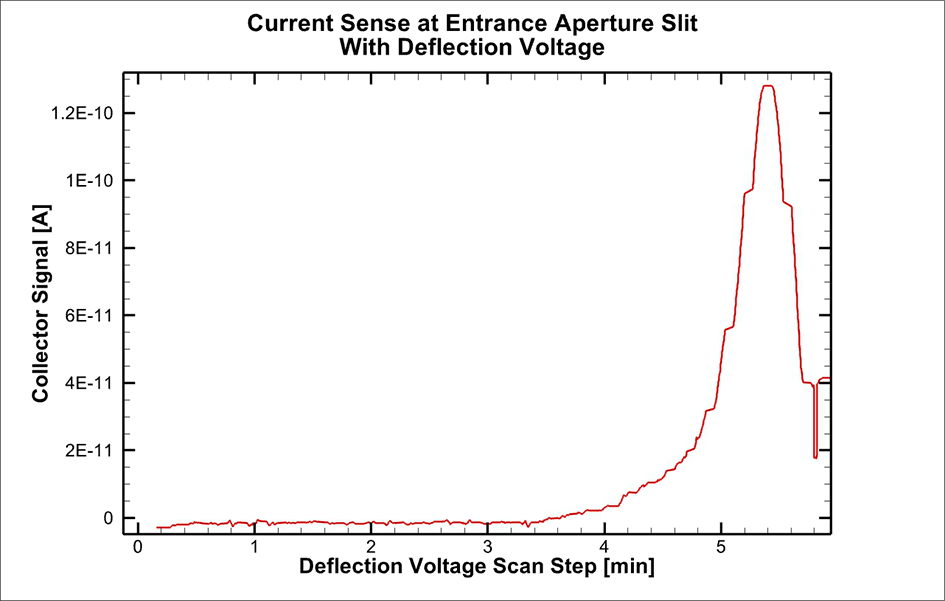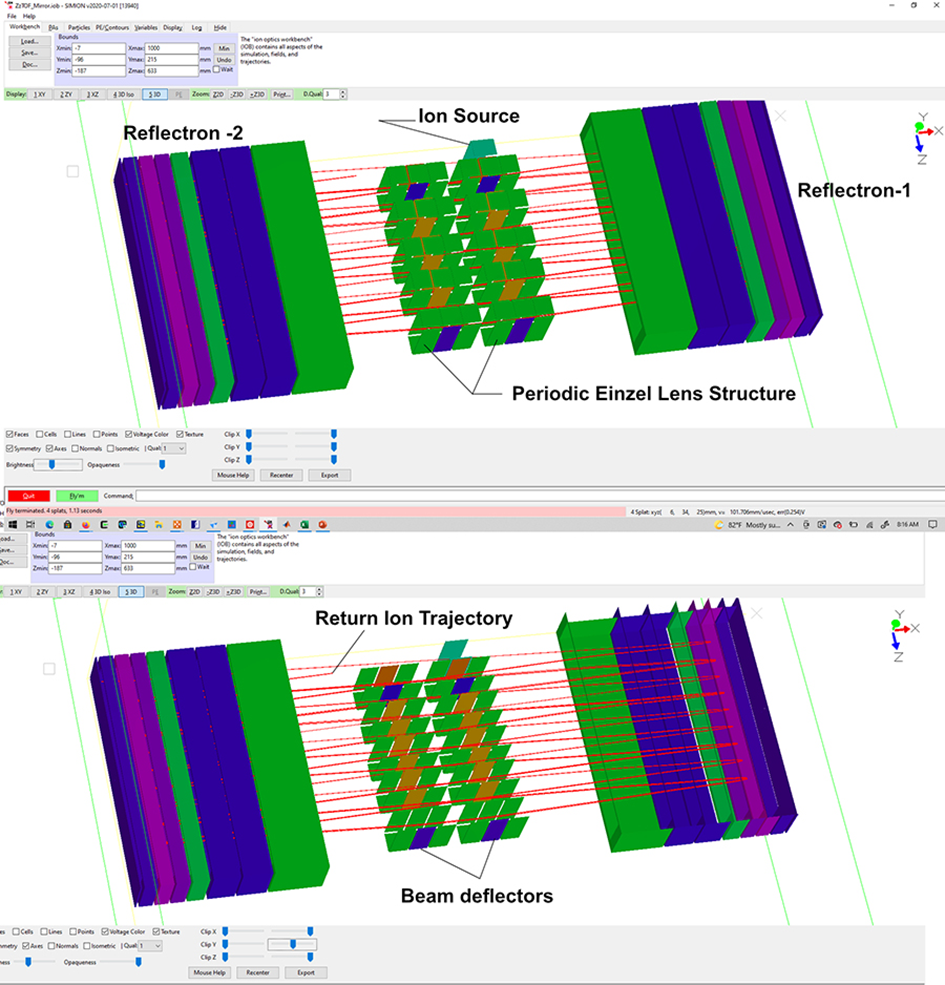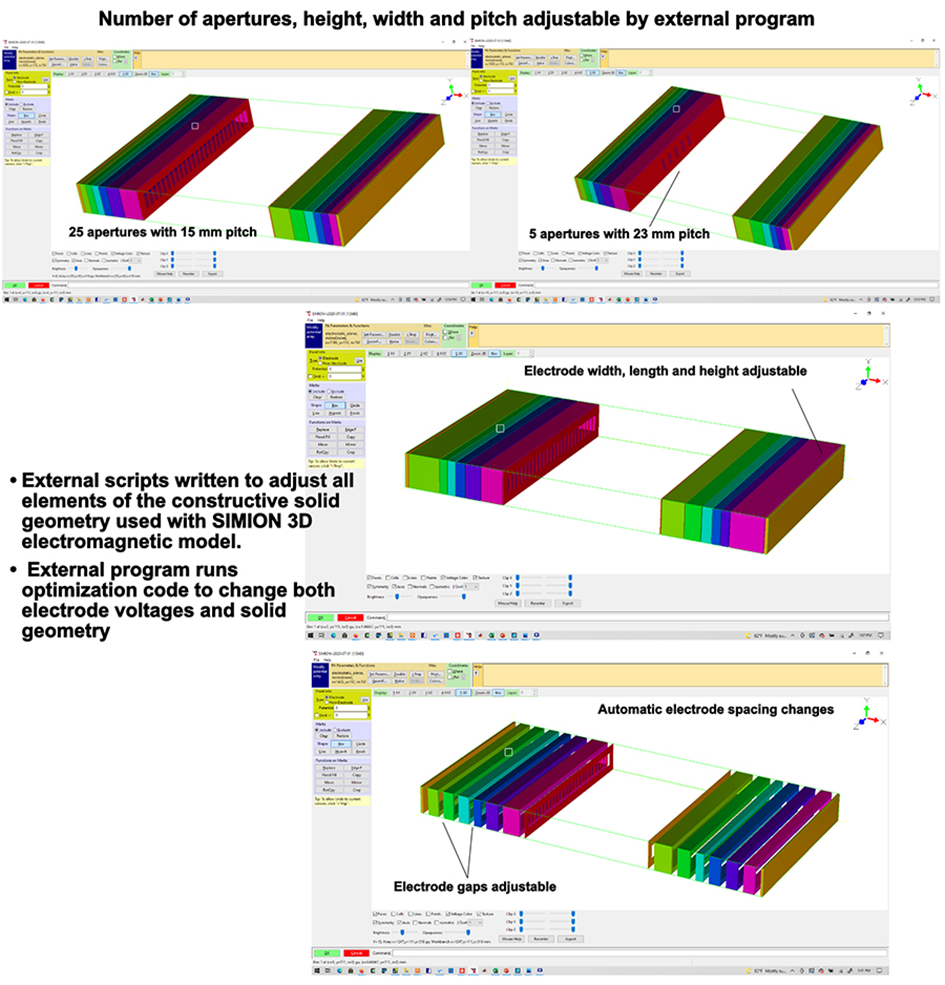Background
Gas chromatography-mass spectrometry (GC-MS) has long been considered a “gold standard” for quantitative analytical analyses of a variety of small molecules. Making these benchtop systems into field-portable instruments would greatly expand the analytical capability of landed space missions in addition to a variety of Earth science based in situ measurement applications. Recently, SwRI has developed the MAss Spectrometer for Planetary EXploration (MASPEX), a sensitive, high resolution mass spectrometer as part of NASA’s Flagship Europa Clipper Mission. Utilizing our previous instrument development heritage, the primary objective of this research is the development of a novel ion optical interface between a gas chromatograph and ZigZag time-of-flight mass spectrometer (ZZTOF-MS). Successful instrument development would lead to a compact GC-MS system for identification and quantitation of complex sample matrices for future landed missions at Enceladus, Europa, and Titan.
Approach
SIMION and Molflow simulations are employed to design the ion optical regions of the ion source and ion transfer optics to couple the GC with the ZZ-TOF-MS (Figure 1). The ion source (Figure 1, Section A) ionizes the neutral gases separated in the gas chromatograph (GC) and then transfers those ions to a second ion optical region which transmits the ions through a quadrupole triplet (Figure 1, Section A) into the orthogonal acceleration (OA) source of the ZZTOF-MS (Figure 1, Section C). The gas loads from the helium carrier gas flow rates of the GC separation are used to determine the pumping capacity and aperture or slit size of each differentially pumped region of the GC-MS interface to achieve lower pressures through each successive region and the lowest pressure achieved in the mass analyzer region. The ZZ-TOF-MS is designed with trade space parameters of size (mass), ion transmission (sensitivity), and mass resolution.

Figure 1: Block diagram of the proposed ion optics coupling the GC to the ZZ-TOF-MS.
At the end of the project, we plan to couple a micro-electro-mechanical system (MEMS) gas chromatograph, demonstrated on a current instrument development project, to the ZZ-TOF-MS through our novel ion optical interface to demonstrate the proof-of-performance prototype for a future landed mission GC-MS instrument.
Accomplishments
The ion source has been built and assembled and is currently under test. The ion source ionizes the neutral gases separated in the gas chromatograph (GC) and then transfers those ions to the orthogonal acceleration (OA) source in the ZigZag time-of-flight mass spectrometer. (ZZTOF-MS). Ion beam current measurements have been made at the beam-defining slit at the exit of the ion source. Beam current measurements registered with a picoammeter are displayed in Figure 2.

Figure 2: Ion beam current measurements at the beam-defining slit while stepping through the deflection voltage demonstrating successful operation of the ion source.
SIMION simulations have also been performed for optimization of the ion optical design of the ZZ-TOF-MS. Simulations of the ion beam trajectory through the ZZTOF-MS are shown in Figure 3.
External user written scripts developed to speed up three-dimensional SIMION model creation, ray-trace and geometry optimization. Scripts embedded in constrained optimization code designed to optimize voltages and geometry. Examples of several parametric geometry changes to the solid reflectron model are shown in Figure 4.

Figure 3: SIMION simulation showing a ray trace of ion beam trajectory through the ZZTOF-MS.

Figure 4: Example of parametric three-dimensional constructive solid geometry generation tool to construct the reflectron mirror electrodes, slots and define boundary conditions used in SIMION 3D ray trace code.
